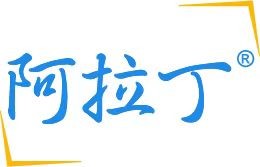Arabian Journal for Science and Engineering ( IF 2.6 ) Pub Date : 2022-10-31 , DOI: 10.1007/s13369-022-07392-2 Ahmad Alzahrani
|
|
This study proposes a two-phase switched-inductor DC–DC converter with a voltage multiplication stage to attain high-voltage gain. The converter is an ideal solution for applications requiring significant voltage gains, such as integrating photovoltaic energy sources to a direct current distribution bus or a microgrid. The structure of the introduced converter is comprised of an interleaved switched-inductor boost stage attached to the voltage multiplier cells stage. The interleaved switched-inductor consists of two switched-inductor phases controlled by two out-of-phase controllable switches. The switched-inductor stage can be fed by single or multiple self-controlled input power sources. The voltage multiplier networks are comprised of diodes and capacitors to raise the converter’s voltage gain. Several advantages are gained using the proposed converter such as, reduced potential stress on switching elements, the continuity of the source current, and the modularity of both the switched-inductor and the voltage multiplier stages. In addition, the modularity of the proposed converter improves the scalability, in which the voltage gain can be increased by connecting additional voltage multipliers or switched-inductor cells. The theory of operations of the presented converter, component selection, and steady-state calculations are explained in detail. The simulation results support the theoretical investigation and verify the hardware implementation of a 400 W experimental prototype to convert 20.0 V from an input voltage source to a 400.0 V output load.
中文翻译:

用于光伏能源应用的交错式开关电感升压转换器
本研究提出了一种具有电压倍增级的两相开关电感 DC-DC 转换器,以实现高电压增益。该转换器是需要显着电压增益的应用的理想解决方案,例如将光伏能源集成到直流配电总线或微电网。所介绍的转换器的结构包括一个交错式开关电感升压级,该升压级连接到电压倍增器单元级。交错式开关电感器由两个开关电感器相位组成,由两个异相可控开关控制。开关电感级可由单个或多个自控输入电源供电。电压倍增器网络由二极管和电容器组成,以提高转换器的电压增益。使用所提出的转换器获得了几个优点,例如减少了开关元件上的潜在应力、源电流的连续性以及开关电感器和电压倍增器级的模块化。此外,所提出转换器的模块化提高了可扩展性,其中可以通过连接额外的电压倍增器或开关电感单元来增加电压增益。详细解释了所介绍的转换器的工作原理、组件选择和稳态计算。仿真结果支持理论研究并验证 400 W 实验原型的硬件实现,以将 20.0 V 从输入电压源转换为 400.0 V 输出负载。源电流的连续性,以及开关电感器和电压倍增器级的模块化。此外,所提出转换器的模块化提高了可扩展性,其中可以通过连接额外的电压倍增器或开关电感单元来增加电压增益。详细解释了所介绍的转换器的工作原理、组件选择和稳态计算。仿真结果支持理论研究并验证 400 W 实验原型的硬件实现,以将 20.0 V 从输入电压源转换为 400.0 V 输出负载。源电流的连续性,以及开关电感器和电压倍增器级的模块化。此外,所提出转换器的模块化提高了可扩展性,其中可以通过连接额外的电压倍增器或开关电感单元来增加电压增益。详细解释了所介绍的转换器的工作原理、组件选择和稳态计算。仿真结果支持理论研究并验证 400 W 实验原型的硬件实现,以将 20.0 V 从输入电压源转换为 400.0 V 输出负载。其中电压增益可以通过连接额外的电压倍增器或开关电感单元来增加。详细解释了所介绍的转换器的工作原理、组件选择和稳态计算。仿真结果支持理论研究并验证 400 W 实验原型的硬件实现,以将 20.0 V 从输入电压源转换为 400.0 V 输出负载。其中电压增益可以通过连接额外的电压倍增器或开关电感单元来增加。详细解释了所介绍的转换器的工作原理、组件选择和稳态计算。仿真结果支持理论研究并验证 400 W 实验原型的硬件实现,以将 20.0 V 从输入电压源转换为 400.0 V 输出负载。


















































 京公网安备 11010802027423号
京公网安备 11010802027423号